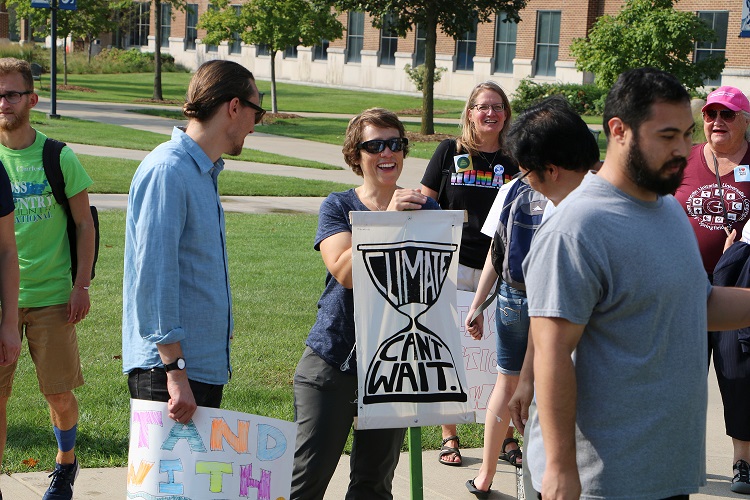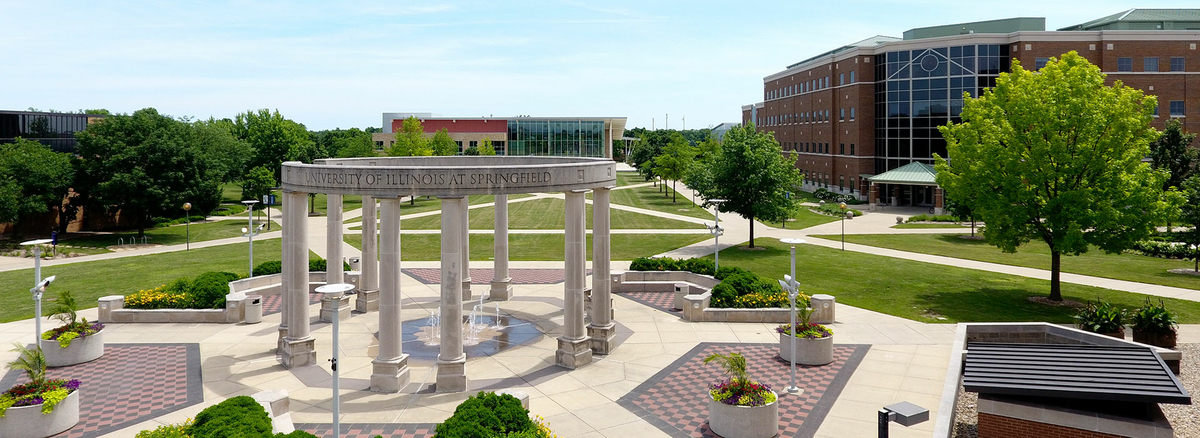
In February of this year, the Intergovernmental Panel on Climate Change (IPCC) began to roll out its Sixth Assessment Report (or AR6). Climate change and the science that makes sense of it hit the headlines pretty frequently these days, but the IPCC’s Assessment Reports are … special. The voluntary, global scientific advisory organization’s ARs summarize literally thousands of cutting-edge research articles and reports related to climate change, and include a “summary for policy makers” that aims to set a baseline of knowledge for public decision making. And AR6 covers a truly staggering range of research findings.
What’s that? You missed it? Or maybe you sensed there was climate science action afoot, but it couldn’t be important since it barely scraped your news feed? Not surprising. Between a brand new, globally impactful war and a simmering deadly pandemic the world has a lot on its plate right now. So indeed, AR6 hasn’t had the kind of coverage it might otherwise have, or that it deserves.
Alternately, perhaps you’ve been following climate change pretty closely for years, you perused the report itself, or coverage thereof, and you’re thinking “there’s really not much new here.” In a sense, that’s fair too. The report is a review of the state of knowledge, after all, and moreover, in many of its guises, climate change has come to feel like a background condition: quite literally “the air we breathe.” If you’re an avid climate news follower, you might even be able to predict the broad outlines, at the very least, of the new report and related coverage, like:
- We have a crucial window of opportunity, but time is running out;
- Scientists are more sure than ever of the damage human actions are causing to the globe; and
- The poorest and least responsible for these human-caused changes are bearing the brunt of their impact.
Because of my scholarship on climate politics, especially as related to (3) above, for the last six years I’ve been one of the UIS community members directly charged with communicating about climate change in classes and other events: a responsibility I feel honored to bear, but which also weighs heavily. As we’ve prepared to celebrate this Earth Day (April 22nd, BTW) and spring course syllabi arrived at climate-related topics, another handful of these events popped up on my calendar. As successive cohorts of students have come through my classrooms over those six years, climate coverage has more or less stuck to the outline I just sketched – but the treadmill-like quality of climate change science, politics, and news is, in important ways, illusory.
Indeed, AR6 shows that we remain far off the trajectory of emissions reduction that would secure an ecological future for the planet that resembles the recent past. The longer we remain there, the faster we must dramatically reduce – ideally eliminate – greenhouse gas emissions in order to preserve coastlines, coral reefs, other biodiversity, water availability, and food production, not to mention cultures and lifestyles, and the temporal windows discussed now are often at the scale of one to three decades. At the same time, the global disruption and massive mobilization of public resources associated with the COVID pandemic, and shifts in political power in the U.S. and abroad suggest interest in and potential for dramatic response efforts that have previously been difficult to envision.
How then to talk about climate change with students, and the wider public, in the spring of 2022? The dominant media strategies might be instructive, but the very existence of predictable patterns, amidst what we know to be a deepening, mortal crisis, suggests the need to think again. Indeed, as I scrolled down and down, preparing to wade once more into the breach, one such familiar pattern caught my eye. Let’s call it “things are getting worse, but there’s a bright side….” I don’t mean to be glib; this is an important message (or frame, really – right ENS 581?), and it’s one I’ve myself delivered many times. Moreover – depending on what follows those ellipses – it’s one in which we can place trust, and that’s always important in science reporting. Here’s one of many fine examples, from NPR reporter Rebecca Hersher.
Still, though, which is it: is the glass half full or is it half empty, particularly if, as is the case for most of my students, you’re poised rather near the beginning of a potentially very long life on an imperiled planet? Arguably it’s both, as things often are (thanks again, Mr. Hegel), though to a large extent it also depends on who and where you happen to have been born (on which, more below). We are most definitely in poor shape, emissions-wise, but we do still have a chance to avoid the worst of climate change, and we have the means to do that, if we can only critically assess and speedily mobilize them.
One cognitive/communications problem is that it's genuinely hard to keep both these perspectives in mind, just as it’s hard to hold the complex, slow violence wrought by upward-creeping average temperatures, on the one hand, and the sudden, deadly weather events they engender, on the other. Yet each are expressions of the same climate system (or, more usefully, the same intertwined industrial, social, and climate systems).
Another, perhaps more specific conundrum of climate communication I’ve been thinking about lately stems from the emphasis science and policy discourses place on targets. Prime examples include the focus on 2 and later 1.5 degrees Celsius as a hoped-for ceiling on global average temperature rise since the industrial revolution (other, less commonly discussed targets also abound). These provide clear, science-based aims for policy-making, and they pin policy goals to material outcomes. (Why did 1.5 start to take precedence over 2 degrees a few years back? Because it became clear that 1.5 degrees held out promise of a viable future for low-lying islands and the nations that call them home, by producing less sea level rise than 2 degrees would. It doesn’t get a lot more material than that.)
The problem here is – wait, is it obvious? It might be obvious to readers who are also parents: the problem lies in what happens, and what we can say or think about it, if we shoot past the limit our target denotes. It doesn’t take a stats major (or a parent) to understand that that’s a possibility and, unfortunately, with global average temperature rise it’s become likely. What then?
Inevitably, this comes up. To a classroom full of freshmen recently, who appeared worried, at least from the masks up, I put it this way: “you’ll be OK … but we can’t say that about everybody,” referencing folks on those islands again, as examples. A more precise assessment would be something like, “life will be tougher and less beautiful for average Americans your age, while many people, both here and in other parts of the world, will struggle to survive, and some will lose that struggle.” I feel confident in such ballpark assessments, but much, to put it mildly, remains to be seen, and to be determined. Can nation-states be transplanted, bereft of territories lost to oceans? Can societies founded on the promise of growing prosperity stomach a thoroughgoing energy transition amidst real deepening inequality and largely manufactured political division?
The words used to frame the latest climate science might be familiar, but the responses we choose and demand need to change. Because of the benefits and capacities we have – achieved largely, it must be said, through the same fossil energy combustion that has set vulnerable populations around the world in the path of climate disasters – we have options. Belatedly, but blessedly, institutions and industries have both recently begun to offer responses.
In both the U.S. and Canada, for instance, financial regulators are considering provisions that would obligate publicly held firms to “climate risk disclosures.” Crucial definitions in those provisions will deal with the “scope” of risks requiring disclosure: whether or not supply chains or post-sale consumption-related climate consequences are included, for example. Such provisions could impact the risk profiles of higher education system investments, among other major financial flows, and thereby downstream climate change impacts.
The energy industry itself is scrambling to adapt to what observers class as growing threats to its “social license” to perpetuate and prosper from greenhouse gas emissions. Carbon Capture and Sequestration, or CCS, has long been the hope of industry and public actors who want to avoid scrapping the physical and institutional infrastructure that built corporate and political empires on fossil fuels, or to capitalize on partial alternatives, like ethanol additives. One current proposal seeks to locate the underground terminus of a new liquid CO2 pipeline in Central Illinois, where the substance (a biproduct from ethanol plants, in this case mainly in Iowa) would be housed – theoretically, at least – safely and in perpetuity. CCS and the infrastructure it promises to preserve and grow have been the subject of widespread debate and much critique, however, and recent science examining the technology casts doubt on its potential as well as its cost.
Meanwhile, after much work by a diverse coalition of non-profits, the Illinois legislature last summer passed the Climate and Equitable Jobs Act (CEJA), aimed at marrying a transition toward renewable energy with programs to create jobs in communities across the state, raising social equity. As with any major legislation, implementation will be crucial to achieving the public good CEJA was intended to deliver, for the planet as well as for the people of Illinois.
So we have opportunities, and decisions to make. Is that all? The United Nations climate negotiations, a focus of my research, have often been mired in debate over who bears what portion of responsibility for climate change; it’s not pretty. As Americans, it’s true that we can’t ensure the future of the climate on our own, but whatever the manner in which we assess responsibility, we must recognize that we are able to respond, and we must do so while we can, and while it will matter. Educators and educational institutions readily acknowledge our responsibilities to students and to society. We cannot accept a procession of beleaguered cohorts through our classrooms, bound for ever-darkening prospects at home and more sordid tragedies abroad. Within higher education, stepping up means helping our students to tool up, so that we as a society don’t give up, in the increasingly likely event that we blow past our climate targets. And students – yes, you bear responsibility too – yours is to speak up. Your dreams and your demands help make clear all that older generations, public institutions, and any who would lead hold in trust on your behalf, and that must be ensured.
_____________________

Dr. Brandon Derman is an Assistant Professor of Environmental Studies at UIS. Brandon received his Ph.D. in Geography from the University of Washington in 2015. His scholarly and teaching interests center on the production, regulation, and contestation of environmental marginality at scales from the globe to the neighborhood. His current research examines the framing of nature-society relations in climate change law, governance, and social mobilization, and the political opportunities that situate participation by historically-marginalized groups in climate and sustainable development policy making. He is the author of the book, "Struggles for Climate Justice: Uneven Geographies and the Politics of Connection" published in 2020.



